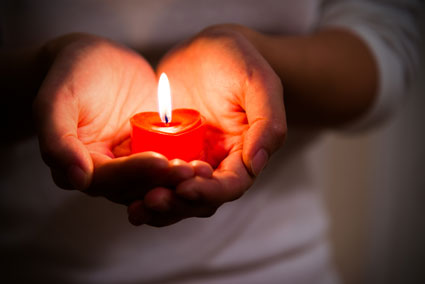The practice of ham radio operation began mainly as a hobby for many people, but there are also many professional uses for the technology, with operators providing many services such as emergency communications. Through the advances of the Internet, lasers, and microwave transmitters, today's ham radio operators are making contact with people in greater numbers than ever before. In fact, the use of a ham radio can enable a private citizen to have one of the most powerful wireless communications devices possible. It opens up a wide variety of opportunities for both amusement and professional endeavors.
This article will enable you to learn both basic and advanced concepts in ham radio operation as well as guiding you through the logistical and legal process of obtaining your own license and setting up your own in-home radio station, or "shack."
Hams use a wide variety of equipment to communicate, including radios and antennas, and they are allowed to operate in a very specific range of radio frequencies. Radio frequencies are a small subset of the Electromagnetic Spectrum, which is the entire range of frequencies used for radio, light, x-rays, and all other electromagnetic radiation. The government specifically reserves each section of the Electromagnetic Spectrum for various purposes, for example, cell phones, FM Radio stations, etc.
The origin of the word "ham" to describe amateur radio station operators is mostly unknown, but the prevailing theory, as cited by the American Radio Relay League (ARRL), is that professional radio stations used to refer to amateurs as "hams" when they found that their radio frequency was being jammed (or interrupted) by these amateur operators. The term stayed in use for many years and, as the ham radio industry grew, enthusiasts adopted the name as their own. The ARRL is the largest organization for ham radio operators in the world.
In addition to radios, of course, hams also use cameras, telegraph equipment, computers, lasers, and some hams, especially those that offer professional services such as emergency communication, use their own satellites. One other feature that Hams use is usually thought to be an old fashioned method of communication, but it is still widely used today: Morse Code. Morse Code was developed in 1836 by Samuel Morse and it is a method of radio communication that assigns all letters and numbers to a series of short and long sounds or flashes of light.
One of the most important aspects of ham radio operation is amount of groups throughout the world dedicated to the hobby and professional operation of ham radio stations. In addition to the AARL, as mentioned previously, there are thousands of organizations dedicated to a very wide variety of purposes.
Even the most basic radios used by people who engage in ham radio as a hobby contains very sophisticated technology. But, this should not dissuade someone with a casual interest in ham radio from engaging in the hobby. Ham radio enthusiasts have very varied backgrounds in technology: some are experts, and some know next to nothing about how the actual technology they use works. The concept is very similar to modern-day computers: many of us know how to use a computer, but only some can tell you exactly how it works. Regardless, both types of people can use and enjoy computers to their fullest extent. The same is true for ham radios.
Some hams build their own radio station by designing their own equipment, but many people assemble stations using factory-built equipment that is widely available in stores and on the Internet. Regardless of which method you use, this process of setting up your own station is called "home brewing," and it is one of the most enjoyable aspects of the hobby for many people. Many of the organizations dedicated to ham radio assist people in setting up their stations.
Propagation
One of the most important concepts for all ham radio operators is propagation. Propagation is the process of radio signals traveling through the air, bouncing from surface to surface as it travels to radio antennas. Hams will closely monitor the atmosphere for storms, weather conditions, solar flares, and other atmospheric conditions that affect the transmission of radio signals (or the propagation of radio signals) through the air. Weather can play a very important role in the effectiveness of a radio signal, and this is an especially important concern for those ham radio operators who engage in professional emergency services. Having the right antenna is an especially important concern for most hams.
In addition to being avid users of various antennas, hams have contributed greatly to the science and advancement of antennas over the past generation. An antenna receives radio signals and it can be something as simple as a wire attached to the radio's circuitry or it can be a huge tower that transmits signals to a very wide area.
Chewing the Rag
The most common form of communication used by hams is simple conversation among other enthusiasts. This conversation is generally called "chewing the rag," and the contacts (or the people with whom hams speak) are called "ragchews." A ragchew can refer to a contact or the actual conversation itself. A ragchew can take place with someone who lives across the street from you, or, with using advanced technology, someone who lives thousands of miles away.
Nets
A Net, or a network, is a scheduled meeting of various hams on the airwaves that are dedicated to various specific purposes. Such nets are traffic nets, which relay text messages between operators, sometimes for emergency purposes. Emergency Service Nets often meet to practice emergency communication so that they will be prepared in an actual emergency. Technical Service Nets are very popular as they help Hams work out technical issues and serve as on-air forums for advice.
DX-ing, Contests, and Awards
DX is a very common acronym used in ham radio and it means distance. "DX-ing" stands for the practice of trying to contact the farthest person away from you, an endeavor that many Hams delight in.
Ham Radio Technology
Radio Waves
We briefly discussed propagation in the last chapter, which is the transmission of radio waves through the air. But, what exactly are radio waves? It is a good place to start our review of ham radio's basic technology.
A radio wave is a form of light. This is an unusual thought for many people so we must again revisit the concept of the entire Electromagnetic Spectrum. In the entire spectrum, visible light is only a very small portion of the Electromagnetic Spectrum. X-Rays, for example, are also light but you cannot see them. The same can be said for Infrared light, which can only be detected using special equipment. So a radio wave is just another wave of light that cannot be seen by human eyes. But, they are all around us and they have many common properties with visible light. Radio waves travel at the same speed as light � approximately 186,000 miles per second.
Radio waves travel through the electric and magnetic fields contained in the air. Electrons, or charged particles, also move through the air: they move one specific way through the electric field and another way through the magnetic field. The exact process of how electrons move does not need to be fully understood to understand the basics of radio waves. But, it should be known that moving electrons are current that also moves the electric and magnetic fields. These moving fields create radio waves.
Wavelength and Frequency
Radio waves travel in waves, much like the waves of the ocean. They move (or oscillate) up and down in a uniform motion. Just imagine for a moment if you held a piece of string in your hands with one end in each hand and you pulled it apart tightly. The string would move up and down rapidly, and this is very similar to how radio waves oscillate through the air. The amount of time it takes for the string, or a radio wave, to move from its top position to its bottom position and up again to its original position is called its cycle. The amount of distance that a radio wave moves in one cycle is called its wavelength. The number of cycles in one second is the radio wave's frequency.
Radio Spectrum
The radio spectrum is the small section of the Electromagnetic Spectrum devoted to radio transmission. When you tune your radio to a specific station, you are choosing a specific frequency that is contained within the radio spectrum. All of these different frequencies are grouped together into specific types of frequencies, and these groupings are called bands. So, for example, there is the AM band, which contains signals from AM radio stations. Bands are a very important concept in ham radio so we will look at the four main segments (or bands) of frequencies.
- Shortwave or High Frequency Radio waves traveling in this band are intended for AM radio stations, "ship-to-shore" and "ship-to-ship" communication, several military frequencies, the Citizens Band, and several different ham radio bands are contained within this band.
- Very High Frequency (VHF) This band includes television channels 2 through 13, all FM radio stations, several ham radio bands, some military frequencies, and some other commercial radio frequencies.
- Ultra High Frequency (UHF) This band includes TV channels 14 and higher, two Ham radio bands, cell phones, and some military frequencies.
- Microwave This band includes GPS signals, wireless telephones, WiFi networking signals, several ham radio bands, and, yes, your microwave oven.
Transceivers and Other Devices
A basic ham radio contains a receiver, which receives radio signals. But, many radios also contain their own transmitters, which enable them to transmit their own signals. Both a transmitter and a receiver are required for two-way communication. Such a device is called atransceiver, which is a combination of the two words. Transceivers are also called rigs.
The ham radio is connected to its antenna by a feedline. Two of the most commonly used antennas are dipole and beam. A dipole antenna is made entirely from wire and it connected to its feedline in the middle. A beam antenna is usually better at receiving and sending signals in a certain direction, so it usually sits on top of a tower and its direction can be easily changed if necessary.
The feedlines coming from the radio and going to the antennas travel through a device called an antenna switch. As the name implies, it enables the operator to switch between antennas � you might want to use one antenna for certain purposes but then change to a different antenna later.
If you are using Morse Code transmission, and many hams do, you have a choice between using an old fashioned "straight key" Morse Code device, or the more modern "paddle and key" device. The paddle and key are much faster and easier to use.
Feedline Measurements
The power of a radio's antenna is an important consideration for a ham radio operator. More specifically, a measurement of the efficiency of the feedline is monitored. The feedline measurements report on thestanding wave ratio (SWR) within the feedline, which is a measurement of how much of the transmitter's power is making it to the antenna.
Filters
Filters, as the name implies, are used to filter out (or reject) certain frequencies or ranges of frequencies. There are four major types of filters:
- Feedline filters: A feedline filter is used to reject certain frequencies that enter the radio's antenna. As a signal travels through the feedline from the antenna, it is rejected before it reaches the radio.
- Receiving filters: A receiving filter is contained within the radio itself and is used to filter out all signals except the very one the operator wishes to accept. This greatly reduces interference, or the "background noise," from other, unwanted radio signals.
- Audio filters: An audio filter will reject unwanted background noise from nearby radio signals.
- Notch filters: A notch filter is used to reject a very specific frequency or a specific range of frequencies.
Modulation





















